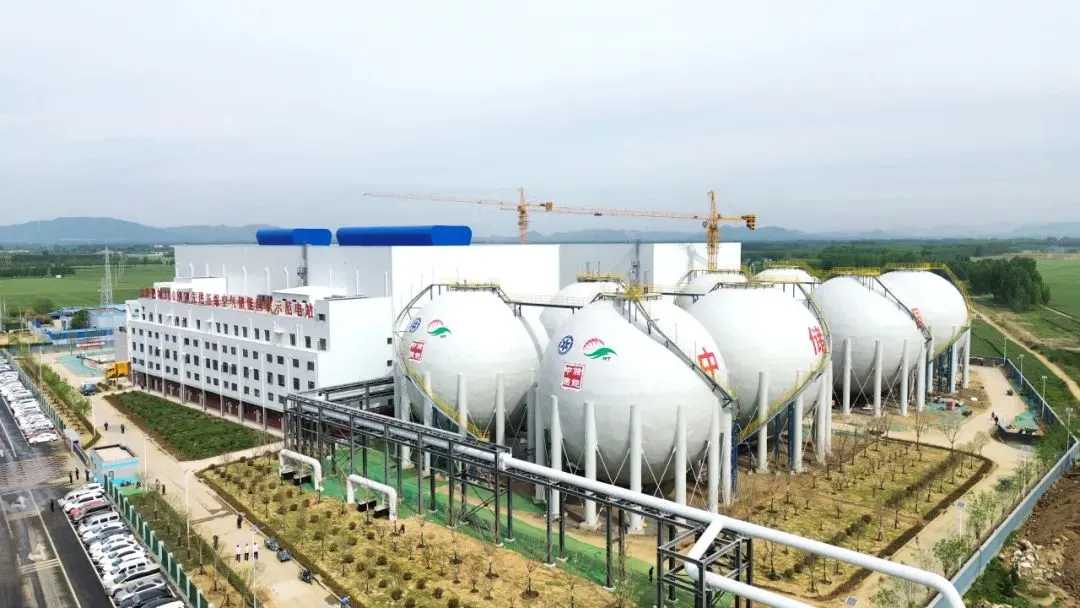- cross-posted to:
- [email protected]
- cross-posted to:
- [email protected]
cross-posted from: https://lemmy.ml/post/15724955
World’s largest compressed air energy storage project comes online in China
The renewables movement will be won on finances and nothing else.
It is anticipated that the project will yield an internal rate of return on capital of about 16.38%, with a payback period of around 7.1 years.
That sounds really promising.
The specs certainly look impressive. Let’s hope this thing works as designed. Definitely a promising approach.
Wouldn’t this be horribly inefficient?
The tldr says 72% efficient. If it can store excess solar or wind from times they are not in use and release at times of higher demand, it should be great.
Better is always on the road to perfect.
Yeah that isn’t as horrible as I had initially thought, though its still not great
You are right though something is better than nothing, but I wonder how this facilities cost compares to an equivalent battery storage facility
In all of this, we need diversity. Diversity of generation sources (solar, wind, tidal, etc). Diversity of storage (Chemical batteries, compressed air batteries, pumped hydro, etc). Each will have different sweet spots; cost vs reaction time vs capacity vs efficiency.
Try not to dismiss a technology just because it’s not the whole solution. Nothing ever is. They all contribute a part to the big picture.
Compared to what?
pumped water or flywheels maybe? you lose a lot of energy compressing gas to heat dissipation.
Well, no. The round trip efficiency of pumped hydro is terrible. And flywheels aren’t scalable. 72% is pretty decent and I’m sure that can still be improved.
Round trip efficiency of modern pumped storage hydro is about 80%. How is that horrible if 72% is decent?
Pumped hydro obviously does have drawbacks in that it requires you to have the water and suitable landscape available to dedicate to it, but efficiency doesn’t seem to be one of them
Energy density is terrible of pumped hydro, plus you have the environmental impact; tunnel out the inside of a mountain, place a generator hall in there, and then flood a valley. Sure it look ok at the end of it, but huge damage has to be done each time. All of that coats large sums of money too, and it can only be done in a relatively small number of locations. Step 1. You need a mountain to pump the water up.
Compressed air batteries are a lot more energy dense, so smaller footprint, so much lower environmental Impact / cheaper and they don’t rely on particular geographic features to work. They might be a bit less efficient, but that seems like a good trade to me.
If you have a good heat exchanger, don’t you get most of that energy back when expanding the gas?
What does “a good heat exchanger” look like in this case? You compress air, the pump heats up, so you ventilate it to keep it cool. The air in the tank is hot, and starts to cool as it sits in the tank, and this causes a decrease in pressure, which is why even with no leaks a shop air compressor will run for awhile, stop, then after awhile cut back on again.
I get that I’m applying a shop tech’s “machines that I can move with a hand truck” understanding to factory-size operations here but…
If I remember my thermodynamics correctly, compression and expansion of a gas is a fully reversible process. Energy lost as heat during compression can be (in theory) regained during expansion.
In practice, achieving high efficiency with this form of energy storage would require compressing and expanding the gas very slowly, to minimize the temperature differential. This is not great if the energy storage is intended for high power applications.
I think compressed air “batteries” will always come with a fundamental trade off between charging efficiency (energy in/energy out) vs maximum power (Watts). Whether the low cost of storage (big empty tank/cavern) is enough to make this competitive, I do not know…
Yeah the gas laws like to say things like “an ideal gas in a closed system.” Storing energy by compressing gas, using the gas basically as a spring, is trying to take advantage of Boyle’s law, while trying not to run afoul of Charles’ law. Take a parcel of room temperature air and compress it. The total amount of heat energy remains the same, but the temperature skyrockets. Because of a temperature gradient, some of the heat energy will pass into the compressor machinery, the walls of the air tank, any pipes and hoses etc. and radiate into the environment, so that when the gas is allowed to expand to ambient pressure again it absorbs heat to do so, imparting less energy to any pneumatic motor it is expanded in than went into compressing it.
An insulated tank might help mitigate that but for the sake of the bearings and packings I’d suggest against insulating the compressor cylinder.
I was thinking of lithium or sodium ion battery storage
It would take 460 Tesla Megapack 2 XLs to be the same capacity as this. The biggest deployment so far of those is about 200 Megapacks 1 giving 450MWh capacity vs 1,800MWh for this.
The lithium batteries can supply the same power (300MW) and cost $160M. This cost $207M, so quite a lot cheaper given 4x the capacity.
deleted by creator
This is the best summary I could come up with:
Chinese developer ZCGN has completed the construction of a 300 MW compressed air energy storage (CAES) facility in Feicheng, China’s Shandong province.
Previously, the largest CAES facility was a 100 MW project switched on in October 2022 by the Institute of Engineering Thermophysics of the Chinese Academy of Sciences, also in China’s Hebei province.
It claimed that the facility was 30% cheaper than the 100 MW project built by the Institute of Engineering Thermophysics and said its overall efficiency is 72%.
The $207.8 million facility boasts an energy storage capacity of 300 MW/1,800 MWh and occupies an area of approximately 100,000 m2.
The facility has an estimated annual electricity generation of 600 TWh and is projected to save about 189,000 tons of standard coal consumption.
The project’s investor has disclosed plans to offer various ancillary services to generate revenue through participation in China’s electricity trading market.
The original article contains 362 words, the summary contains 146 words. Saved 60%. I’m a bot and I’m open source!




